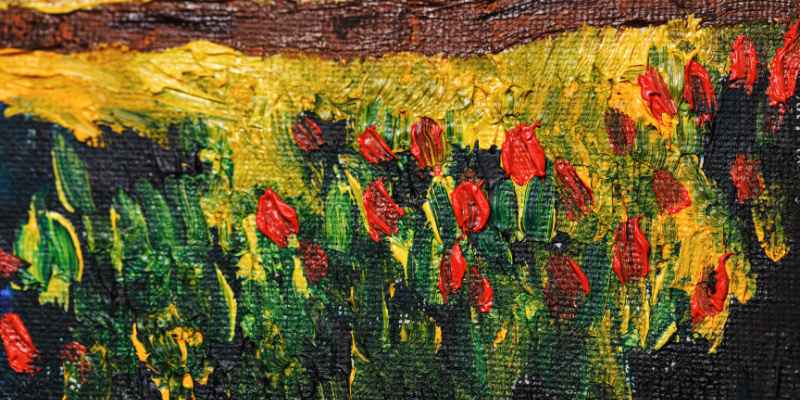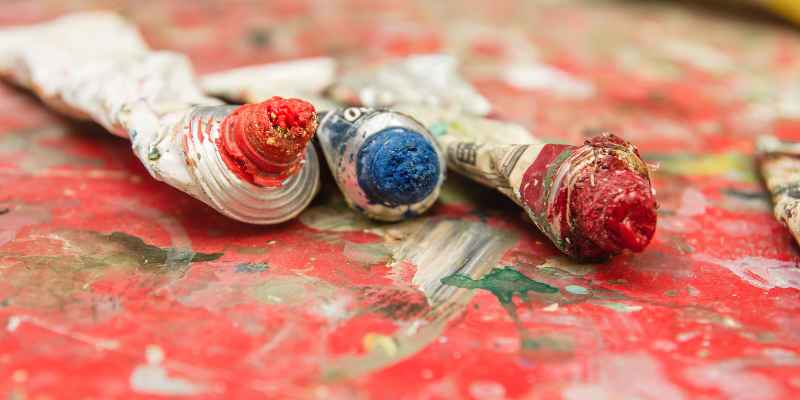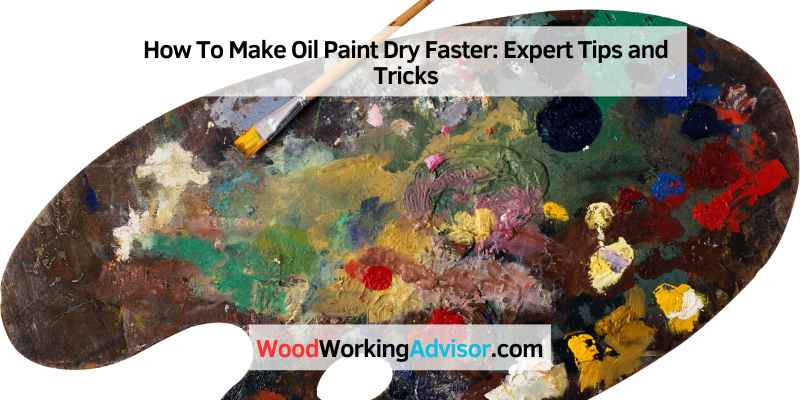To make oil paint dry faster, use a drying agent or thin layers of paint. This article will provide tips on how to expedite the drying process for oil paints.
Oil paint is known for its long drying time, which can be frustrating for artists who want to complete their artwork quickly. Fortunately, there are several methods you can use to speed up the drying process. One approach is to add a drying agent, such as cobalt or manganese drier, to your oil paint.
These additives can help reduce drying time significantly. Additionally, applying thin layers of paint instead of thick impasto can also promote faster drying. By following these techniques, you can enjoy a quicker drying time for your oil paint projects, allowing you to move onto the next steps in your artistic process.
Choosing The Right Supplies
Speed up the drying process of oil paint with the right supplies. Explore techniques and products that can help your oil paintings dry faster, allowing you to complete your artwork more efficiently.
When it comes to oil painting, choosing the right supplies is crucial to ensure your artwork dries faster. This article will guide you on the two essential aspects of supplies that can significantly impact the drying time of your oil paint: the quality of oil paints and the use of fast-drying oil mediums.
Quality Of Oil Paints
The quality of your oil paints plays a vital role in the drying time of your artwork. Opting for high-quality oil paints ensures that the pigments and oils used are finely ground and well-balanced, allowing for efficient drying. Low-quality oil paints may contain more fillers or inferior pigments, which can result in longer drying times.
If you want your oil paint to dry faster, prioritize investing in premium-quality oil paints from reputable brands. Although they might cost slightly more, the superior pigments and oils will not only enhance the overall quality of your painting but also expedite the drying process.
Using Fast-drying Oil Mediums
In addition to using high-quality oil paints, incorporating fast-drying oil mediums into your painting process can further accelerate the drying time.
Fast-drying oil mediums, such as alkyd mediums, are specifically formulated to speed up the drying time of your oil paints. These mediums consist of a mixture of oils and resins that promote faster oxidation, resulting in quicker drying. By adding a few drops of a fast-drying medium to your oil paints, you can significantly reduce the drying time.
It is important to note that when using fast-drying oil mediums, dosage control is key. Adding too much medium can affect the consistency of the paint and potentially compromise the integrity of your artwork. It is advisable to follow the manufacturer’s instructions regarding the recommended usage quantities.
Moreover, if you are working on a large-scale painting or have time constraints, fast-drying oil mediums can be particularly beneficial. They allow you to build layers or make corrections more quickly, enabling you to progress through your painting with greater efficiency.
In conclusion, to make your oil paint dry faster, ensure you choose high-quality oil paints and incorporate fast-drying oil mediums into your painting process. By selecting the right supplies, you can expedite the drying time of your oil paintings, allowing you to showcase your artwork sooner.

Adjusting The Painting Techniques
Adjusting the painting techniques is an effective way to make oil paint dry faster. By thinning the paints, applying thin layers, and using a dryer in between layers, you can significantly reduce the drying time of your oil paintings.
Thinning The Paints
One technique to expedite the drying process of oil paint is to thin the paints before applying them to the canvas. Thinning the paint with a suitable medium, such as turpentine or linseed oil, not only facilitates faster evaporation but also creates a more transparent and smooth application.
Thinning the paints also helps in reducing the thickness of the paint layers, which promotes quicker drying. However, It is important to note that excessive thinning might compromise the color intensity and handling characteristics of the paint. Therefore, it is recommended to experiment with different ratios to find the right consistency.
Applying Thin Layers
Instead of applying thick layers of paint, opting for thin layers can significantly speed up the drying process. When applying thin layers, the oil paint gets exposed to air more effectively, allowing for faster oxidation and drying. Moreover, thin layers dry more evenly, reducing the risk of cracking and wrinkling on the surface of the painting.
Besides expediting the drying time, applying thin layers also enables better control over color transitions and layering, resulting in a more intricate and refined artwork.
Using A Dryer In Between Layers
Incorporating the use of a dryer in your painting process can substantially reduce the drying time. A hairdryer or a heat gun can be used to gently blow warm air over the painted surface, accelerating the evaporation of the solvents present in the paint.
Before using a dryer, it is advisable to ensure that the previous layer is touch-dry to avoid blending or smudging the colors. Additionally, be cautious about keeping a safe distance between the dryer and the painting to prevent heat damage or bubbling of the paint films.
| Benefits of Adjusting Painting Techniques for Faster Drying |
|---|
| • Thinning the paints enhances transparency and smoothness. |
| • Applying thin layers reduces the risk of cracks and wrinkles. |
| • Using a dryer allows for the accelerated evaporation of solvents. |
By adopting these adjusted painting techniques, you can make your oil paint dry faster, allowing for quicker completion of your artworks. However, it is crucial to maintain a balance between expediting the drying time and preserving the quality and longevity of your paintings.
Controlling The Environment
Controlling the environment plays a crucial role in speeding up the drying process of oil paint. By optimizing the airflow, humidity levels, and temperature, you can significantly reduce the drying time of your oil paintings. In this article, we will explore various techniques to expedite the drying process by manipulating these environmental factors.
Increasing Airflow
Improving the airflow around your oil paintings is an effective way to facilitate quicker drying. When air circulates freely, it aids in the evaporation of the paint’s solvent, allowing it to dry faster. Here are a few techniques to increase airflow:
- Place your artwork near a fan to create a gentle breeze that promotes evaporation. Ensure that the fan is set on a low speed setting to prevent any damage to the paint surface.
- If weather permits, consider working outdoors or opening windows to allow natural airflow into your workspace.
- Use a drying rack that allows air to flow around and underneath the canvas, enhancing the drying process.
Lowering Humidity
Humidity is a significant factor that affects the drying time of oil paint. High humidity levels hinder the evaporation of solvents and prolong the drying process. To lower the humidity in your workspace:
- Use a dehumidifier to extract excess moisture from the air. Set it to a level that is comfortable for both you and your paintings, typically between 40% and 60% relative humidity.
- Avoid painting in rooms such as basements or bathrooms where humidity levels tend to be higher.
- Place moisture-absorbing materials, such as silica gel packets or open containers of baking soda, near your paintings to absorb excess moisture.
Adjusting Temperature
Temperature also plays a vital role in the drying process of oil paint. Higher temperatures facilitate faster drying, while lower temperatures can prolong it. Consider the following temperature adjustment techniques:
- Keep your workspace at a consistent temperature between 65°F and 75°F (18°C and 24°C) for optimal drying conditions.
- Avoid painting in extremely cold or hot conditions, as it can negatively impact the drying process and cause cracking or other damage to the paint.
- Consider using heat lamps or infrared heaters to raise the temperature of your workspace during colder months, but make sure they are placed at a safe distance from your artwork to prevent overheating.
Using Drying Agents
Speed up the drying time of your oil paintings by utilizing drying agents. These agents help to accelerate the drying process, allowing you to complete your artwork more quickly.
Linseed Oil
Linseed oil is a popular drying agent used by oil painters to accelerate drying time. It is a natural drying oil that comes from flaxseed. When mixed with oil paint, linseed oil enhances the flow and helps the paint dry faster. This technique is especially useful when you need to complete a painting quickly.
Alkyd Resins
Alkyd resins are synthetic drying agents that are compatible with oil paints. They are highly effective in speeding up the drying process. These resins are made by reacting oil-modified polyesters with a drying oil, like linseed oil. Alkyd resins can be added directly to the paint or used as a varnish on top of the dried layers. They provide a glossy finish and create a tough, durable film.
Cobalt Driers
Cobalt driers are chemical additives that can significantly reduce the drying time of oil paint. These driers contain cobalt salts, which act as catalysts in the oxidation process that causes oil paint to dry. Cobalt driers are commonly used in small quantities, as excessive use can lead to over-drying and cracking of the paint film. It is essential to follow the recommended dosage and use them sparingly.
Using drying agents like linseed oil, alkyd resins, and cobalt driers is an effective way to speed up the drying time of oil paint. However, it is crucial to use these additives judiciously and follow the manufacturer’s instructions. Remember to experiment with different combinations and ratios to achieve the desired results. By incorporating drying agents into your oil painting process, you can complete your artwork faster and enjoy the satisfaction of seeing your creations come to life.
Tips And Warnings
To make oil paint dry faster, it is important to avoid applying too thick of a layer. Thick applications of oil paint take longer to dry, which can be frustrating, especially if you are working on a time-sensitive project. Instead, try to apply thin and even layers of paint, building up the desired texture gradually. This not only speeds up the drying process but also prevents the paint from cracking or yellowing over time. Remember, a little goes a long way when it comes to oil paint!
Allowing Sufficient Drying Time
Patience is key when it comes to oil painting. To ensure that your artwork dries more quickly and evenly, it is crucial to allow sufficient drying time between layers. This allows the solvents and binders in the paint to evaporate, leaving behind a dry surface. Rushing the process by adding more layers too soon can lead to frustration and potential damage to the artwork. As a general rule, give each layer of oil paint at least 24 hours to dry before adding another layer. The thicker the layer, the longer it will take to dry. Pay attention to the paint manufacturer’s recommended drying times as well, as these may vary.
Storing The Paintings Properly
Properly storing your oil paintings is essential to prevent smudging, sticking, or any other damage. Once the paint is dry, give it sufficient time to cure, which usually takes around six to eight months. During this time, it is recommended to store the artwork in a well-ventilated area away from heat, direct sunlight, and humidity. Placing a protective layer of acid-free paper or glassine over the painted surface can also help prevent accidental smudging. If you need to transport or stack your artwork, make sure to place a clean sheet of acid-free paper between each piece to avoid any unwanted transfer of paint.

Frequently Asked Questions For How To Make Oil Paint Dry Faster
Can You Dry Oil Paint With A Hair Dryer?
Yes, you can use a hair dryer to dry oil paint.
How Long Does An Oil Painting Take To Dry?
Oil paintings typically take around one to two weeks to dry completely. The drying time can vary depending on factors like room temperature, the thickness of the paint layers, and the type of oil used. It’s important to let the painting dry in a well-ventilated area to ensure proper drying and preservation.
How Can I Speed Up The Drying Of Paint?
To speed up the drying of paint, ensure good ventilation by opening windows or using fans. Increase air circulation by using a dehumidifier or turning on the heat. Thin the paint slightly with water or a drying agent. Apply thin coats and avoid overworking the paint.
Let the paint cure in a warm, dry environment.
What Can I Spray On Oil Paint To Speed Up Drying?
To speed up the drying of oil paint, you can use a spray called a drying medium. It helps the paint dry faster by increasing its oxidation rate.
Conclusion
Speeding up the drying process of oil paint can greatly benefit artists who are eager to continue working on their creations. By implementing the tips mentioned in this blog post and experimenting with different techniques, artists can find the method that works best for them.
Whether it is adding drying agents, using a dry medium, or adjusting the environment, achieving faster drying times can be a game-changer in the world of oil painting. So, get ready to dive into new projects without waiting days for your paint to dry!


